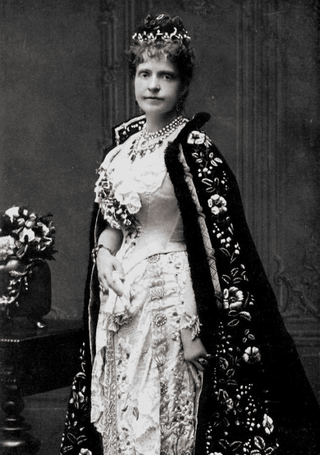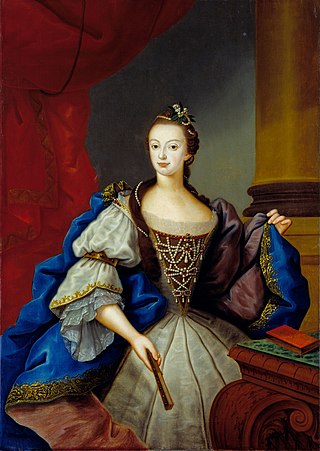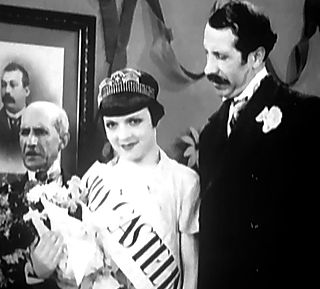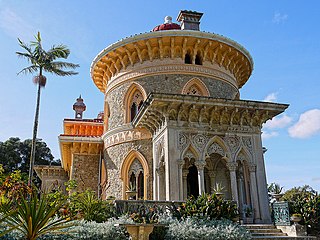
Joseph Hilaire Pierre René Belloc was a Franco-English writer and historian of the early 20th century. Belloc was also an orator, poet, sailor, satirist, writer of letters, soldier, and political activist. His Catholic faith had a strong effect on his works.

Marie Adelaide Elizabeth Rayner Lowndes, who wrote as Marie Belloc Lowndes, was a prolific English novelist, and sister of author Hilaire Belloc.

The Cinema of Portugal started with the birth of the medium in the late 19th century. Cinema was introduced in Portugal in 1896 with the screening of foreign films and the first Portuguese film was Saída do Pessoal Operário da Fábrica Confiança, made in the same year. The first movie theater opened in 1904 and the first scripted Portuguese film was O Rapto de Uma Actriz (1907). The first all-talking sound film, A Severa, was made in 1931. Starting in 1933, with A Canção de Lisboa, the Golden Age would last the next two decades, with films such as O Pátio das Cantigas (1942) and A Menina da Rádio (1944). Aniki-Bóbó (1942), Manoel de Oliveira's first feature film, marked a milestone, with a realist style predating Italian neorealism by a few years. In the 1950s the industry stagnated. The early 1960s saw the birth of the Cinema Novo movement, showing realism in film, in the vein of Italian neorealism and the French New Wave, with films like Dom Roberto (1962) and Os Verdes Anos (1963). The movement became particularly relevant after the Carnation Revolution of 1974. In 1989, João César Monteiro's Recordações da Casa Amarela won the Silver Lion at the Venice Film Festival and in 2009, João Salaviza's Arena won the Short Film Palme d'Or at the Cannes Film Festival. Several other Portuguese films have been in competition for major film awards like the Palme d'Or and the Golden Bear. João Sete Sete (2006) was the first Portuguese animated feature film. Portuguese cinema is significantly supported by the State, with the government's Instituto do Cinema e do Audiovisual giving films financial support.

Dona Maria Pia was by birth an Italian princess of the House of Savoy and by marriage Queen of Portugal as the spouse of King Luís I of Portugal. On the day of her baptism, Pope Pius IX, her godfather, gave her a Golden Rose. Maria Pia was married to Luís on 6 October 1862 in Lisbon. She was the grand mistress of the Order of Saint Isabel. She was the third queen of the House of Savoy on the Portuguese throne, after Mafalda and Marie-Françoise of Savoy-Nemours.

The Palace of Queluz is an 18th-century palace located at Queluz, a city of the Sintra Municipality, in the Lisbon District, on the Portuguese Riviera. One of the last great Rococo buildings to be designed in Europe, the palace was conceived as a summer retreat for King José I's brother, Pedro of Braganza, later to become husband and king jure uxoris to his own niece, Queen Maria I. It eventually served as a discreet place of incarceration for Maria I, when she became afflicted by severe mental illness in the years following Pedro III's death in 1786. Following the destruction of Ajuda Palace by fire in 1794, Queluz Palace became the official residence of the Portuguese Prince Regent João, and his family, and remained so until the royal family fled to the Portuguese colony of Brazil in 1807, following the French invasion of Portugal.

April Captains is a 2000 film telling the story of the Carnation Revolution, the military coup that overthrew the corporatist dictatorship in Portugal on 25 April 1974. Although dramatised, the plot is closely based on the events of the revolution and many of the key characters are real - such as Captain Salgueiro Maia and Prime Minister Marcelo Caetano.

Comédia à portuguesa is a term conventionally used to refer to the genre of popular Portuguese film comedies made in the 1930s and 1940s. The light-hearted comedies are predominantly set in petit-bourgeois milieus in traditional Lisbon neighbourhoods and are often accompanied by musical performances, mainly light music, fados or folk songs. The popular revue, the national equivalent of the North American vaudeville or the British music hall, had a marked influence over the comédia à portuguesa, including the talents of the actors, writers, and musicians.
Stafford Henry Northcote, 4th Earl of Iddesleigh, styled Viscount St Cyres until 1970, was a British peer, a member of the House of Lords from 1970 to November 1999, when the House of Lords Act 1999 came into effect.

Adelina Abranches was a Portuguese stage actress born in Lisbon. She was considered a child prodigy, performing roles on stage at the age of four. She is notable for her acting career in Rio de Janeiro.

Maria da Conceição Infante de Lacerda Pereira de Eça Custance O'Neill was a Portuguese writer, poet, journalist, and spiritualist of Irish descent.

Baltazar Leite Rebelo de Sousa, GCIH was a Portuguese politician and a former minister and member of parliament and medicine professor.

Elizabeth Rayner Belloc was one of the most prominent English feminists and campaigners for women's rights in Victorian times and also a poet, essayist and journalist.

Luis Maria Augusto Pinto de Soveral, Marquês de Soveral GCMG GCVO was a Portuguese diplomat. Kaiser Wilhelm II nicknamed him "the Blue Monkey".

The Portuguese Riviera is a term used in the tourist industry for the affluent coastal region to the west of Lisbon, Portugal, centered on the coastal municipalities of Cascais, Oeiras and Sintra. It is coterminous with the Estoril Coast and occasionally known as the Costa do Sol. Portuguese themselves do not use this expression.

Summer architecture was a Portuguese architectural movement originating in the Portuguese Riviera, in the late 19th and early 20th centuries, when the region became a popular resort destination for the Portuguese royal family and the Portuguese aristocracy. The movement is not characterized by any single architectural style or artistic school, but rather unified by common themes, including leisure, wellness, exoticism, and heterotopia.

Paulo Henrique Lowndes Marques was a Portuguese politician, lawyer, author, historian and conservationist. He was a founder member of the CDS – People's Party and Secretary of State for Foreign Affairs in Portugal. With a Portuguese father and a British mother, he was an active promoter of Anglo-Portuguese relations.

Ana Vicente was an Anglo-Portuguese writer with a strong Catholic faith, known for her support for feminist causes.

Maria Antónia Palla is a journalist, writer and feminist who was one of the first female journalists in Portugal. She played an important role in the legalization of abortion in the country, by promoting the practice in interviews and television programmes. In 2004 Palla was awarded the title of Commander of the Order of Liberty. She is the mother of António Costa, the former Prime Minister of Portugal.
Jose Shercliff was a British journalist who worked in Paris and Lisbon as a foreign correspondent for several newspapers and magazines.

The British Cemetery in the Portuguese capital of Lisbon was established in the early 18th century. It is located in the Estrela district of the city and surrounds the Anglican St George's Church. The first marked grave is dated 1724. The Cemetery contains graves of early British Protestant residents and long-established British families in Portugal as well as British visitors to Lisbon. There are also 31 Commonwealth War Graves. In addition, some British Catholics and non-British Protestants, particularly Dutch, are also buried there. There is a small Jewish cemetery in an adjacent plot. Amongst the famous English people buried in the Cemetery is the novelist Henry Fielding.


















